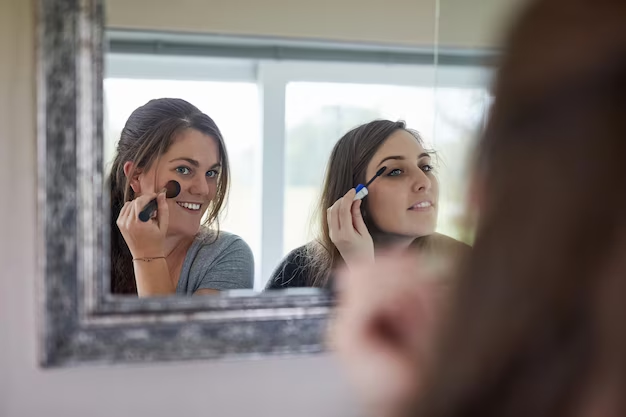Can Vitiligo Disappear? Exploring the Possibilities and Realities
Imagine waking up one day to find that your skin has undergone a dramatic change, giving rise to contrasting patches of lighter skin. This is the reality for millions worldwide dealing with vitiligo, a condition that, while not harmful, poses questions and even social challenges. Among these questions, one emerges quite frequently: Can vitiligo go away? Let's delve into this question, exploring it from various angles to provide a comprehensive understanding.
Understanding Vitiligo
What is Vitiligo?
Vitiligo is a long-term skin condition characterized by patches of skin losing their pigment. These patches arise because the cells responsible for producing melanin, the skin's pigment, are destroyed. With an estimated 1% of the global population affected, vitiligo doesn't discriminate based on ethnicity, gender, or age.
Causes and Theories
The exact cause of vitiligo remains a mystery, but several theories suggest it could be an autoimmune disorder. Environmental factors, genetic predisposition, and even oxidative stress may play a role. While more research is necessary, these theories set the stage for understanding potential treatments and outcomes.
Can Vitiligo Vanish Completely?
Natural Remission: Fact or Fiction?
There have been anecdotal cases where vitiligo has shown signs of remission without treatment, although this is rare. For most, vitiligo remains a chronic condition. The skin's immune system complexities and individual variances make natural remission unpredictable and unusual.
Medical Perspectives on Reversal
From a medical standpoint, complete disappearance without intervention is rare. However, treatments aim to manage vitiligo and can sometimes lead to significant repigmentation. Such treatments, supported by dermatological research, hint at potential for turning down the condition's progression but not eliminating it entirely.
Exploring Treatment Options
Topical Treatments and Their Efficacy
Topical corticosteroids are often the first line of treatment for vitiligo. These creams aim to reduce inflammation and can potentially stimulate melanocyte activity. Results vary: younger patches may respond better, while older ones might resist change.
Phototherapy: Light as a Treatment
Narrowband UVB phototherapy is a more advanced approach that uses controlled ultraviolet light to encourage skin repigmentation. This can be effective for widespread vitiligo, but the treatment demands time and commitment. Multiple sessions over several months are typically needed before one can see meaningful results.
Surgical Interventions: A Last Resort?
In cases where other treatments prove ineffective, surgical options like skin grafting or micropigmentation can be explored. These are often reserved for stable vitiligo, where the patches haven't changed over a period of time, as they involve transplanting skin from one area of the body to another or tattooing pigment into the skin.
Living with Vitiligo: Managing More Than Just Skin
Psychological Impact and Coping Mechanisms
The emotional toll of vitiligo can be profound, affecting self-esteem and mental health. Support groups and therapy often serve as important outlets for individuals dealing with the condition, offering shared experiences and coping strategies.
Lifestyle Adjustments
While vitiligo itself isn't physically harmful, it can increase skin sensitivity, particularly to sunlight. Sunscreen becomes a crucial part of daily routine to prevent sunburns, which can exacerbate patch visibility.
Diet and Supplements: Myth vs. Reality
Though no diet can cure vitiligo, a balanced diet rich in antioxidants might support overall skin health. Supplements are a controversial topic; some suggest certain vitamins and minerals might play a supportive role, though more research is needed to establish their effectiveness.
The Role of Research and Emerging Therapies
Innovations on the Horizon
Research into vitiligo continues to advance, bringing hope of more targeted therapies. Novel treatments, such as JAK inhibitors, show promise in early trials, targeting the specific pathways thought to play roles in vitiligo's development.
Potential for Future Breakthroughs
Although no definitive cure has emerged, the ongoing research might one day yield treatments that offer sustained remission or even prevention of the condition.
Myths and Misunderstandings
Dispelling Common Myths
It's crucial to dispel myths surrounding vitiligo. It is neither contagious nor a reflection of one's hygiene. Educating the public can reduce stigma and discrimination faced by individuals with vitiligo.
Understanding Risks and Realities
While the exact triggers and risk factors aren't fully understood, awareness and information can help mitigate unexpected developments.
Finding Hope and Community
Vitiligo can be unpredictable and challenging, yet hope persists. Thanks to the global community and mutual support networks, many find acceptance and strength through shared narratives. For those just beginning their journey with vitiligo, understanding your options helps create a path forward, over uncertainty and into empowerment.
Summary:
Key Takeaways for Living with Vitiligo
- Natural Remission: Rare, yet possible without intervention.
- Treatment Options: Varying efficacy; include topical creams, phototherapy, and surgery.
- Lifestyle & Management: Use sunscreen and find emotional support.
- Diet & Supplements: Not curative, but balanced nutrition may bolster skin health.
- Research & Hope: Emerging therapies offer future potential.
- Community Support: Builds resilience and aids in emotional management.
🌞 Protection: Always use sunscreen to guard sensitive skin. 💡 Informed Choices: Stay updated with treatment advancements. 🌐 Find Support: Connect with communities to empower your journey.
